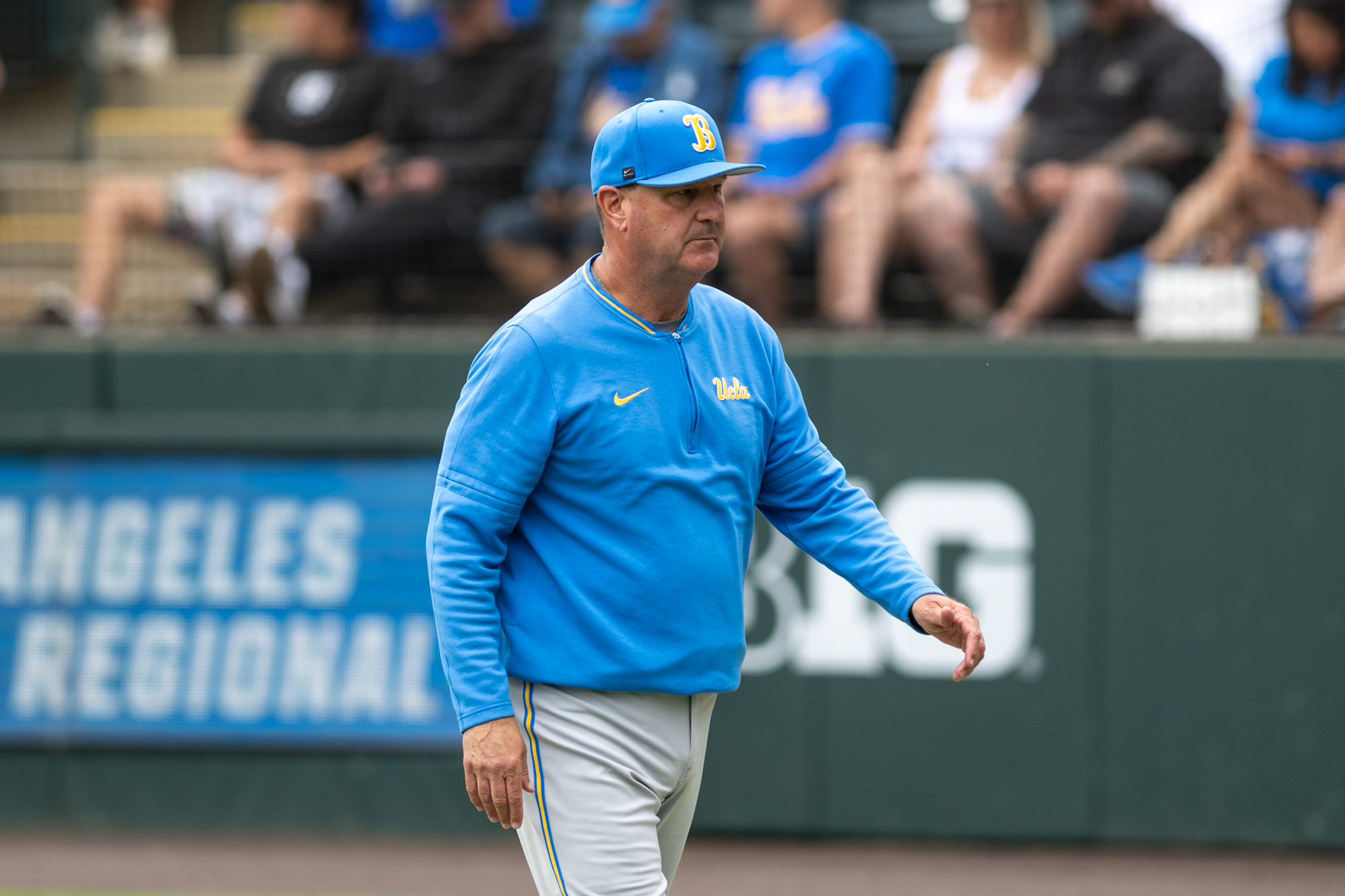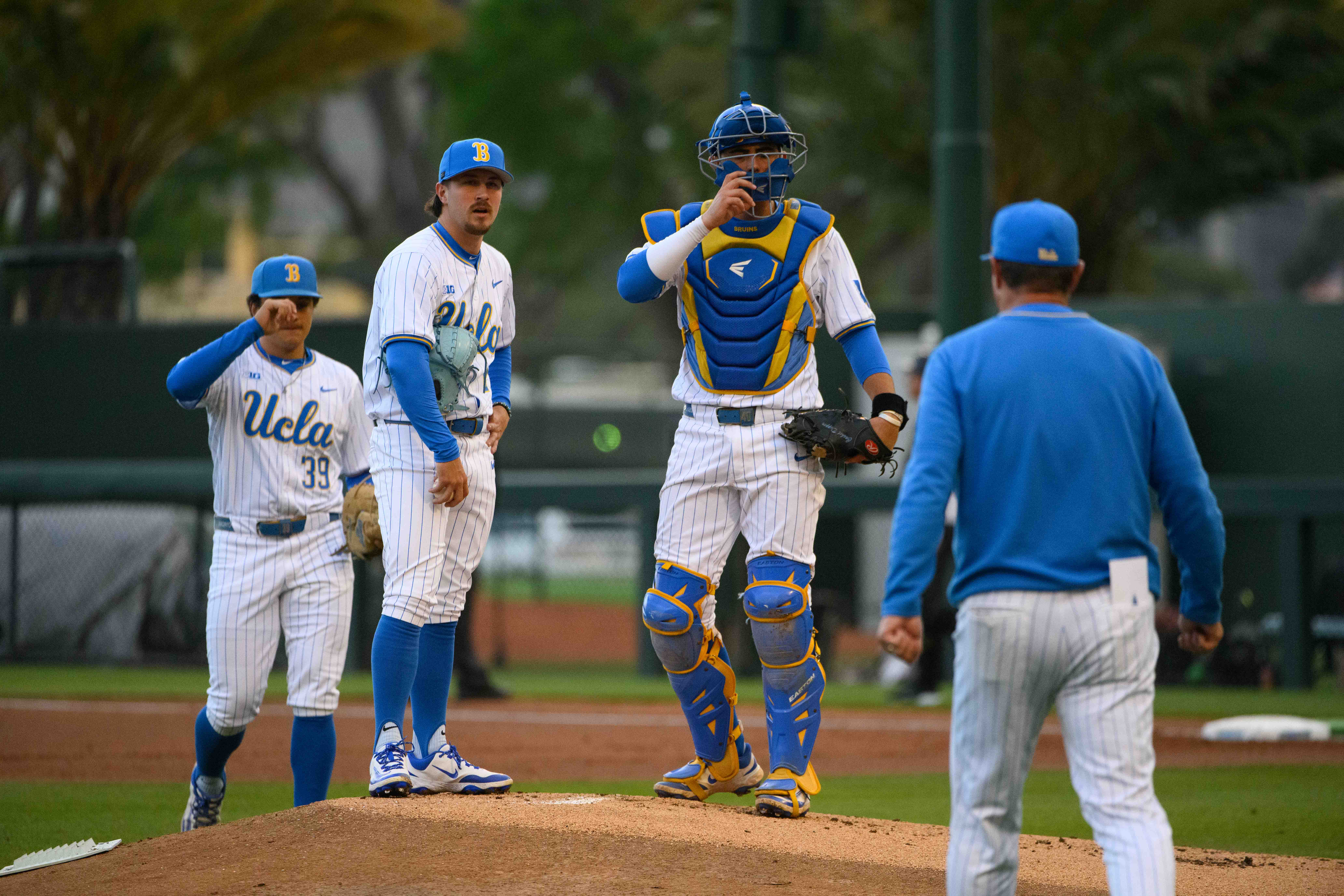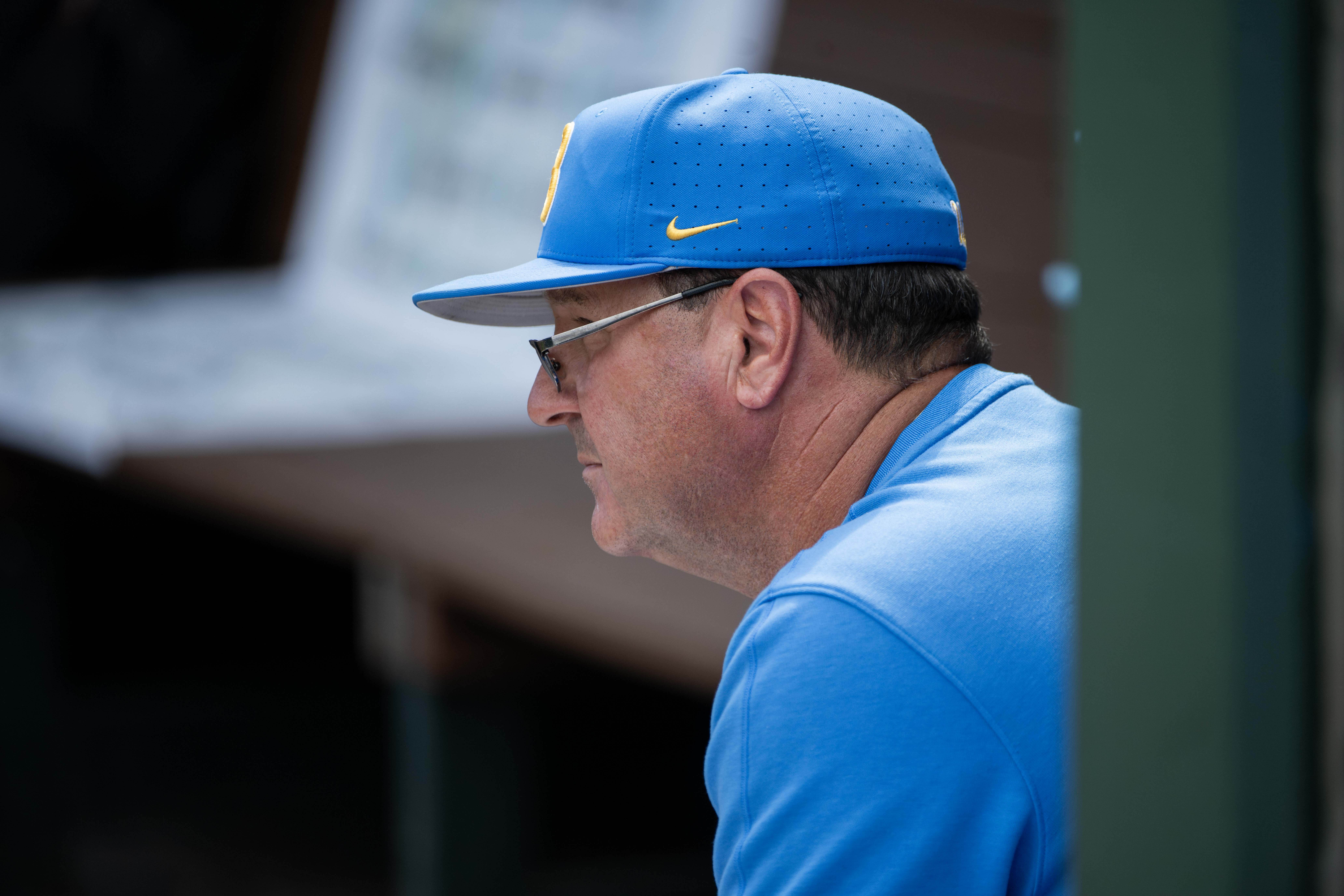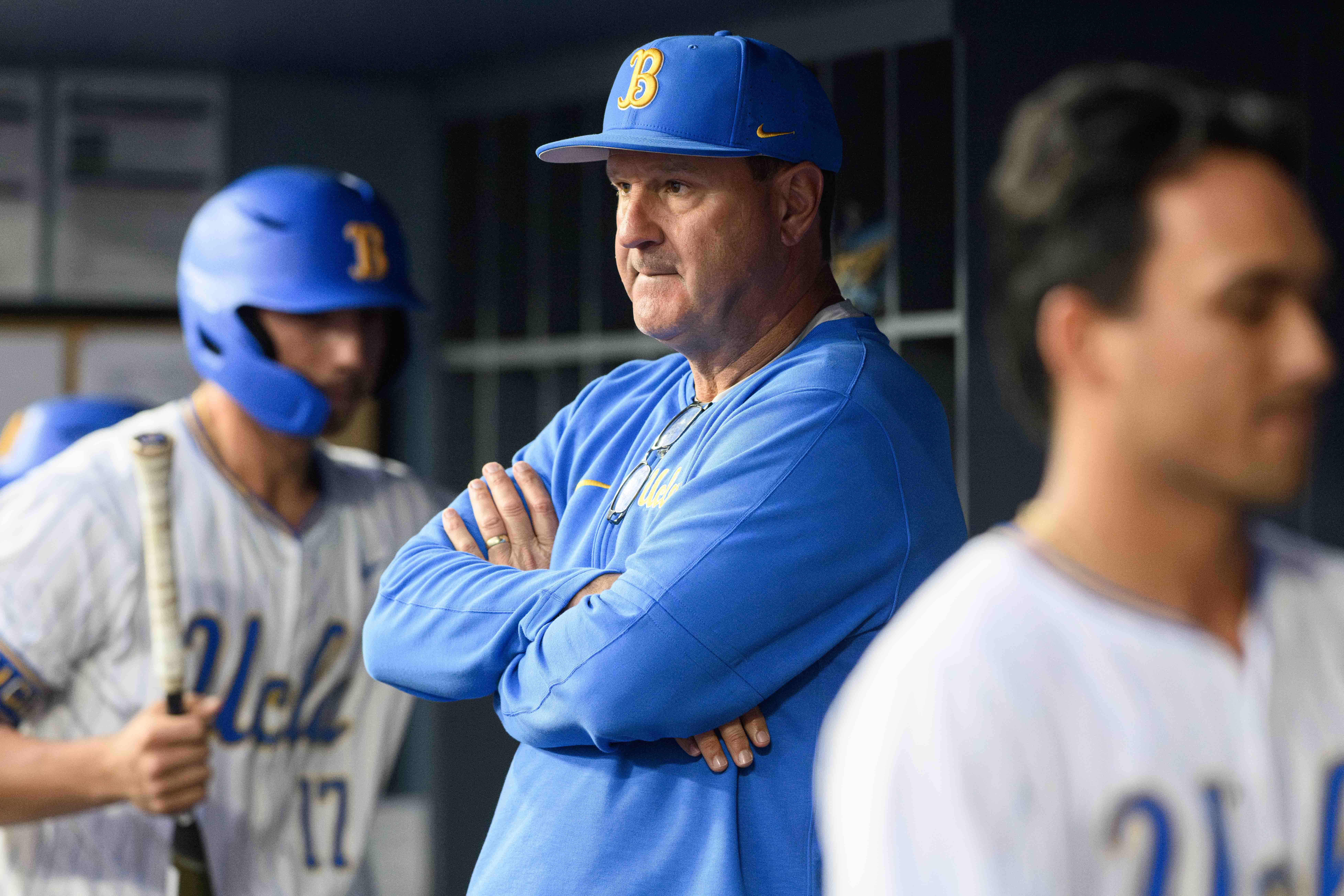Dizon’s Disposition: John Savage needs to expand recruiting pool, focus on pitching development
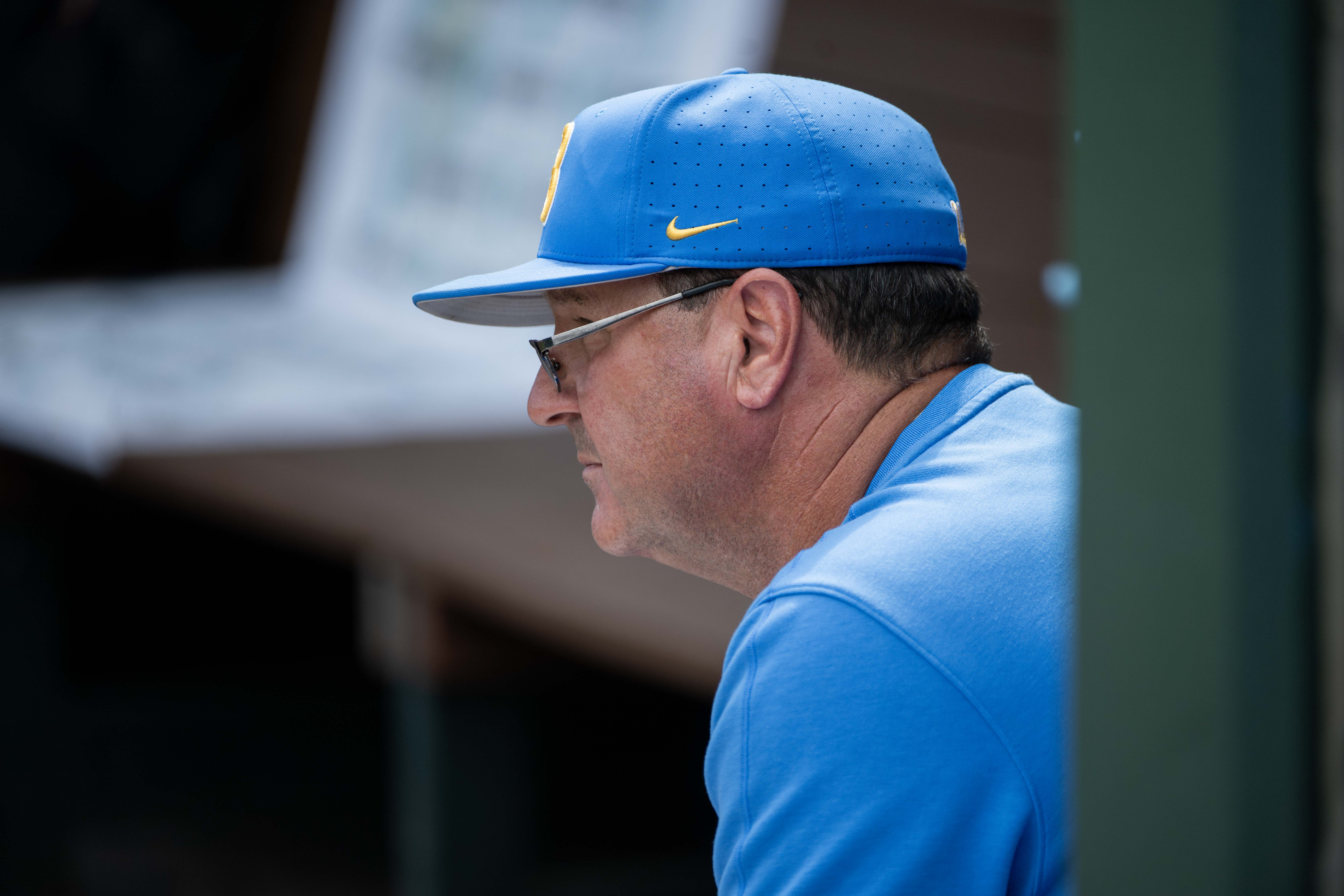
Coach John Savage sits in the dugout while he looks towards the field. Savage led his team back to Omaha this season for the first time since 2013. (Aidan Sun/Assistant Photo editor)
By Kai Dizon
July 8, 2025 8:05 p.m.
This post was updated July 13 at 6:41 p.m.
UCLA baseball coach John Savage made a name for himself in college baseball through high school recruiting and player development.
His 2010 squad, which brought the Bruins back to the Men’s College World Series for the first time in 13 years, was led largely by right-handed starters Gerrit Cole, who came to Westwood despite being a first-round pick by the New York Yankees out of high school, and Trevor Bauer, who graduated high school a semester early to play for UCLA.
And over a decade later, rising junior Roch Cholowsky, who led the Bruins back to Omaha, Nebraska, in 2025, committed to UCLA after his freshman year of high school.
But Tuesday is a sign of shifting tides and an old dog learning new tricks.
Former Texas center fielder and rising junior Will Gasparino announced his commitment to UCLA via the social media platform X.
The Bruins had just four transfers on their 40-man 2025 roster: two graduate students who pitched a combined 10.2 innings in 2024 due to injury, a southpaw who had tossed just 42 innings across his previous two seasons due to injury and a Division II third baseman, who UCLA developed into an everyday outfielder.
Gasparino breaks that trend: not only is he coming from a Power Four program – he’s coming from the reigning SEC regular season champions, he’s a true junior not returning off any major injuries and he made the 2025 All-Defensive team at a premium position.
Savage – whom UCLA extended until 2028 after his previous contract ended June 30 – has long opposed the transfer portal, saying he would rather develop and stick with his own players than steal from another program. When the coach would look elsewhere for experienced talent, it typically came in the form of graduate student transfers. In recent years, Kenny Oyama, Jake Palmer, Knox Loposer, Rashad Ruff, Quintt Landis, August Souza and Ryan Rissas have all donned the blue and gold after completing their undergraduate degrees elsewhere.
But that’s changing, and it’s not hard to see why.
UCLA’s 2025 campaign ended in a grueling single day when it was first defeated by eventual national champions LSU and later by then-No. 3 seed Arkansas – both SEC powerhouses.
Not only do each of those programs actively use the modern transfer portal in ways Savage had long resisted, they also recruit from outside their own backyards.
Of the 40 players on the Bruins’ 2025 roster, just two – rising redshirt junior southpaw Will Goldberg, a walk-on, and rising junior catcher Cashel Dugger – don’t call the West home.
While Gasparino is a Los Angeles local, and all 13 members from the 2025 recruiting class come from California, Washington, Nevada or Hawaii, a Savage-led UCLA program that sticks to its development-first mindset but doesn’t consistently reject the transfer portal or the rest of the United States’ high school talent could return the Bruins’ to the heights they enjoyed in the early 2010s.
Plus, with the House v. NCAA settlement, approved June 6, roster spots are cut from 40 down to 34, and the 11.7 scholarship limit is raised to 34 while allowing schools to pay athletes directly – in addition to the benefits they enjoy through name, image and likeness – making each slot a lot more valuable, with every program in the nation suddenly gaining more chips to poach players with.
Gasparino already provides stellar defense in center field, and his .504 slugging percentage across 117 games at Texas demonstrates his power, but his hitting can leave much to be desired. The rising junior put up just an 85 wRC+ in 2025, striking out 25.7% of the time. However, that was down from 32.9% of the time in 2024. Meanwhile, he improved his walk rate from 4.8% to 11.8% between his freshman and sophomore campaigns.
So if UCLA could get Gasparino to improve his strikeout rate – much like rising junior first baseman Mulivai Levu did when he went from 27.3% in 2024 to 15.3% in 2025 – the Bruins could have a well-above-average hitter manning center field in 2026.
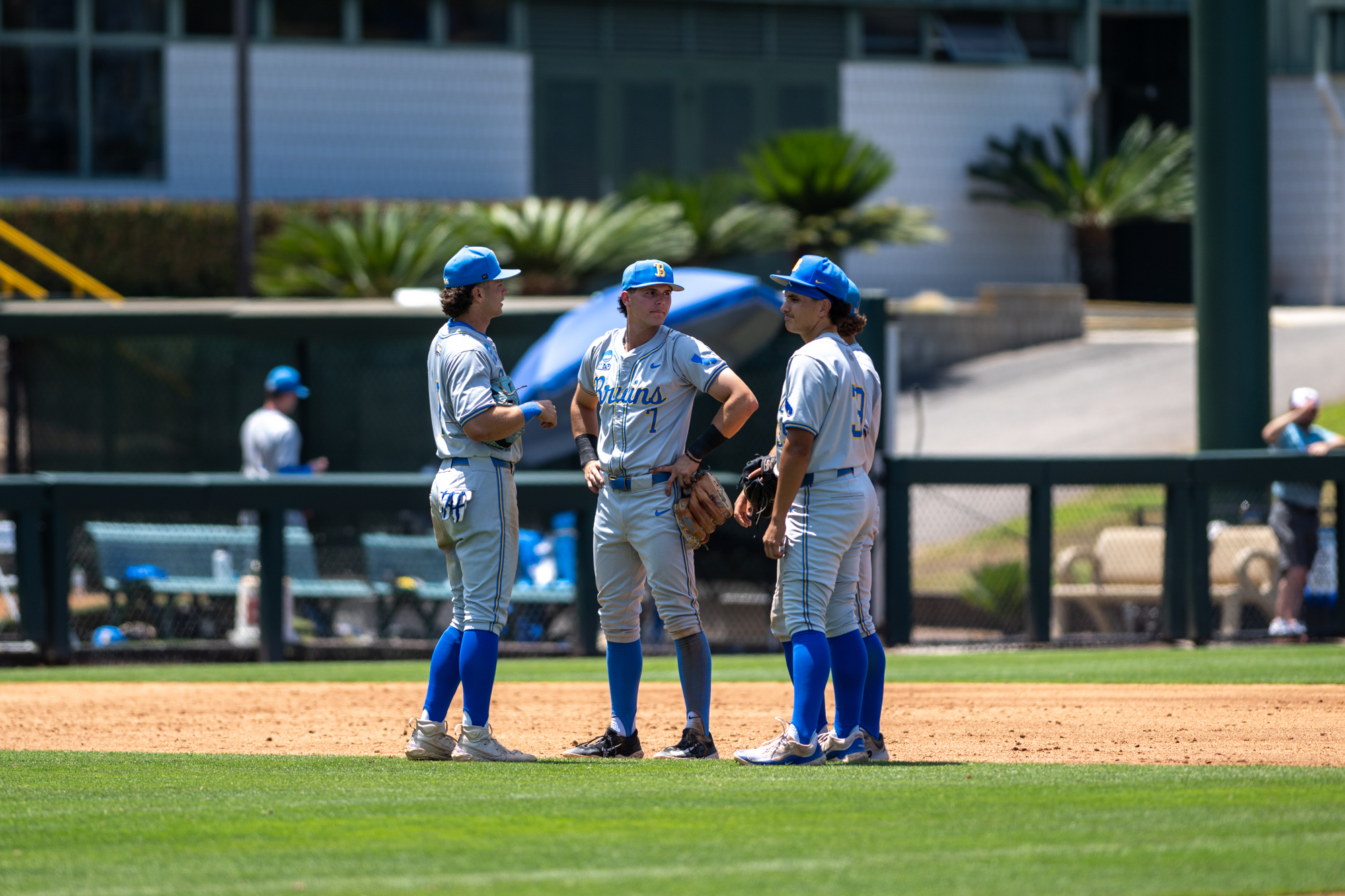
Still, even if the coach embraces bringing in players via the portal, I find Savage’s ability to keep his core together most impressive.
While the Bruins will still have to make it through a fall transfer window and the uncertainties of Jackie Robinson Stadium – with the university’s lease with the Department of Veterans Affairs having expired July 4 after the lease was previously deemed illegal by a district judge in September – the team only lost six players during the most recent transfer window between June 2 and July 1, per D1Baseball.
Cameron Kim and Luke Rodriguez both became academically ineligible after the university’s winter quarter and sat out the rest of the 2025 campaign, Nate Leibold hasn’t pitched since March 2024 due to injury and Rex Solle, Logan de Groot and Justin Cuellar combined for just 15 at-bats and zero batters faced in their shared freshman campaigns.
In other words, every player that appeared during UCLA’s MCWS run with remaining NCAA eligibility is set to return to Westwood in the fall, unless they sign with an MLB team following the draft, which begins July 13.
But maybe the biggest concern for Savage is if he can get back to what made him great – developing starting pitching.
The Tigers and Razorbacks each started a projected 2025 second-round pick in right-hander Anthony Eyanson and left-hander Zach Root, respectively. In opposition, the Bruins started rising junior right-hander Landon Stump, who pitched just two innings before getting lifted against LSU, and rising senior right-hander Cody Delvecchio – who made his first appearance after a two-month absence due to academic ineligibility – against Arkansas.
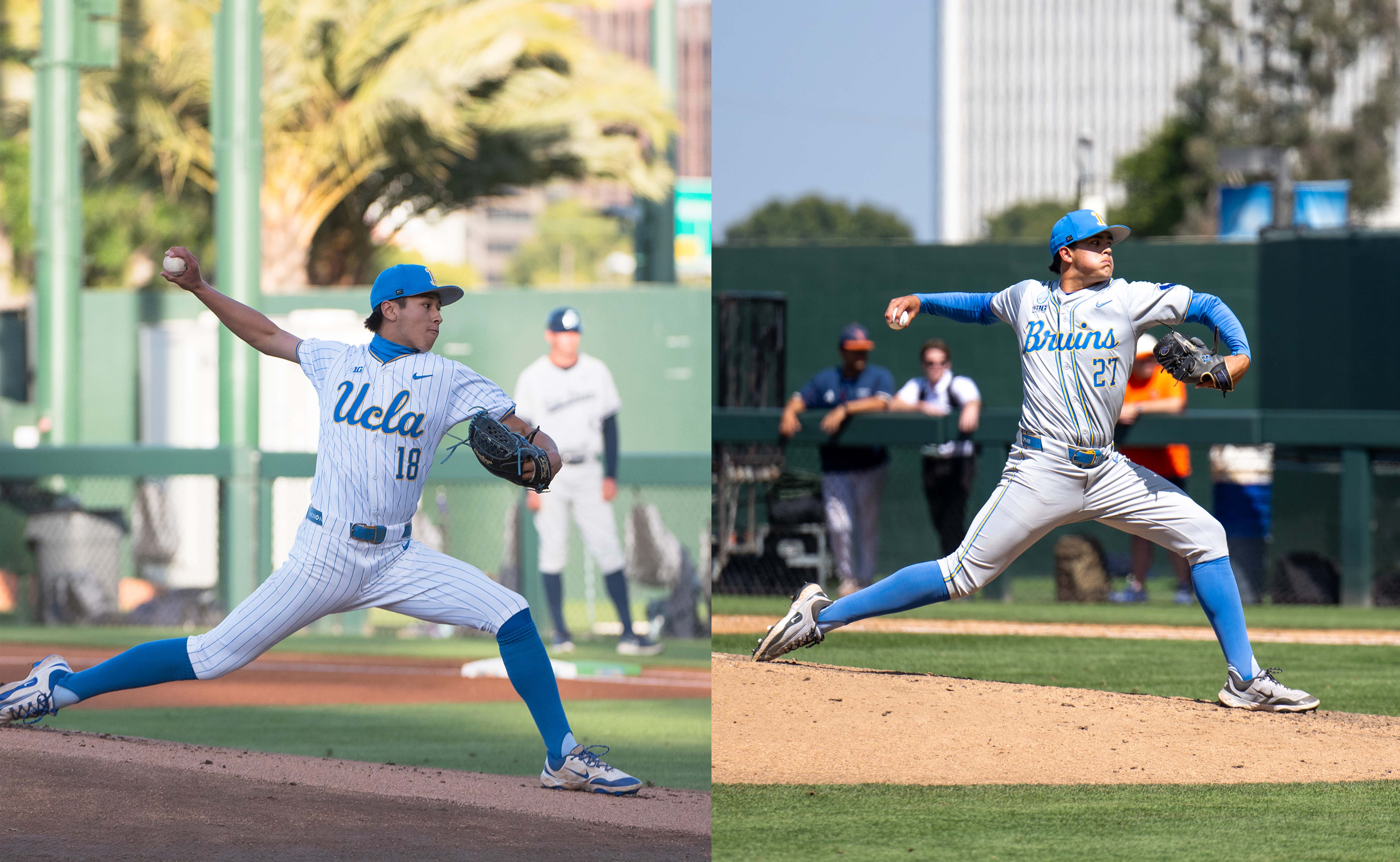
UCLA’s most outstanding pitchers throughout much of the season were a pair of freshman – right-handers Wylan Moss and Easton Hawk, who both just seemed out of gas by the time they reached Omaha.
And maybe most surprising has been the stagnation in rising junior right-hander Justin Lee’s development. Lee, Perfect Game’s No. 24 right-hander of the 2023 class, struggled early in his freshman campaign, but led the team in ERA in May 2024.
The then-sophomore earned the closing job to begin 2025 but lost it by midseason. Lee didn’t appear in the NCAA tournament until the Bruins’ final game against the Razorbacks in a mop-up role. In 2025, his 1.72 WHIP led the team’s pitchers with more than 20 innings pitched and he tossed more innings in his freshman campaign than he did his sophomore.
Still, there’s very much hope.
Rising redshirt junior southpaw Chris Grothues, rising senior right-hander Jack O’Connor and then-graduate student right-hander Souza composed an effective backend of the bullpen – in addition to Hawk, the closer – that got outs without having elite stuff. Notably, those three combined for 5.1 innings in 2024 due to injury.
Even if the days when Savage could rely on a Cole, Bauer, Adam Plutko, James Kaprielian, Griffin Canning or Ryan Garcia for seven, eight or even nine innings are over – as the role of the starting pitch shrinks throughout the higher levels of baseball – the coach’s ability to shoestring a bullpen together, call pitches and bring arms back to life after injury proves the game hasn’t passed him by.
The Bruins already have a strong foundation in recruiting from the West’s high school ranks – and 2025 proved just how fast the program can develop position players with career years from batters up and down the lineup. If Savage can partner that with his old bread and butter of pitching development while the Bruins expand their recruiting pool and strategies, a national title isn’t out of the question over the next three seasons.


